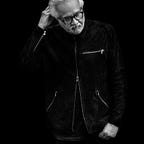Rewild Me.
Rewilding got its pioneer kickoff when architects James Corner, Piet Oudolf and Charles Renfro suggested planting wildflowers atop the former train line in Meatpacking area of Manhattan. Seeing patches of wildflowers growing for 22 blocks on The High Line provided a perfect paradox: portions of New York City’s ultradense urbanity mixed with ‘where the wild things are’ revelry. Now even common folk can walk amidst daisies and butterflies. Nature endures. Build a teepee.
“Britain is one of the most nature-depleted countries on the planet,” suggests British designer Sebastian Cox. Seeking biodiversity rather than another looming fractal architectural design, when Cox redesigned the Birch Selsdon hotel in South Croydon UK, he rewilded their 230 acre golf course as part of the resurrection.
“Ultimately, we have to acknowledge that we are in crisis,” says Cox in a Dezeen regenerative podcast. “We’re in a climate and biodiversity emergency, and I am increasingly disinterested in aesthetics and much more interested in systems,” Cox explains. He plans to introduce small numbers of grazing animals including sheep and pigs, which will distribute seeds and encourage the growth of more flora and fauna.
